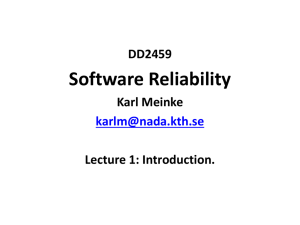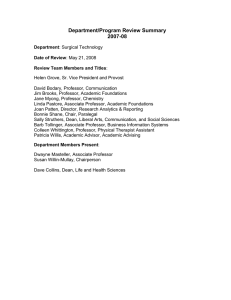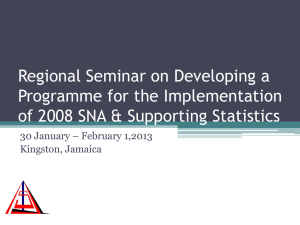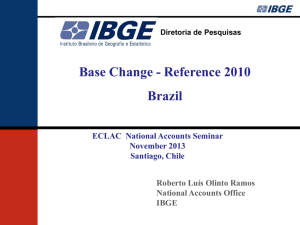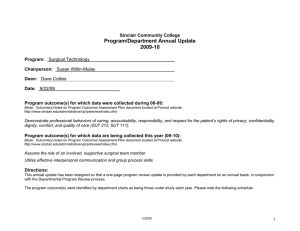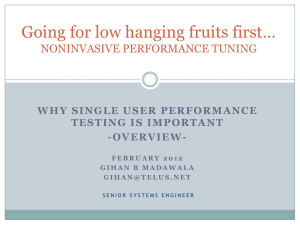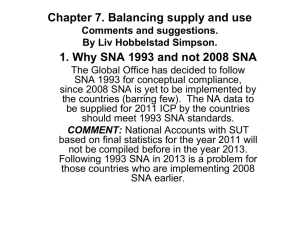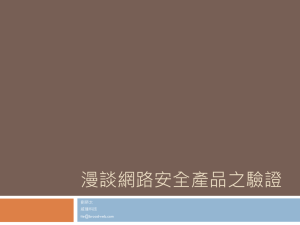ACS PPMR Report – Jan 2011 - United Nations Economic
advertisement
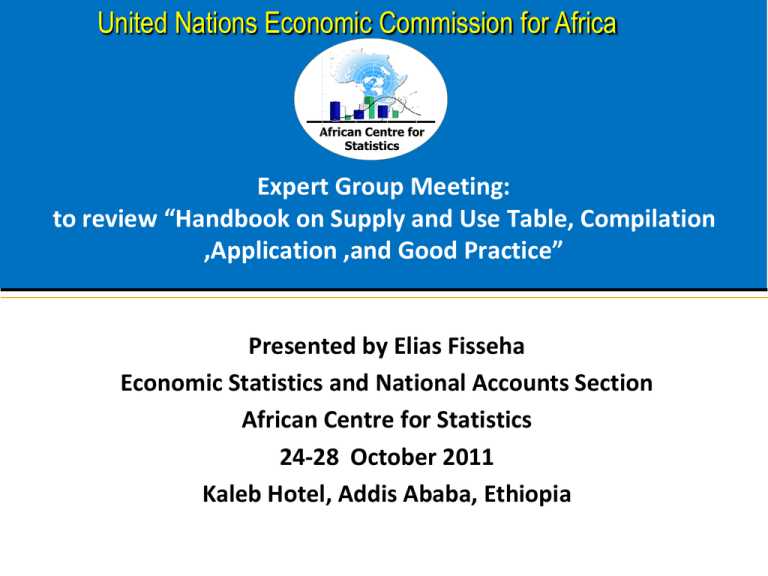
United Nations Economic Commission for Africa African Centre for Statistics Expert Group Meeting: to review “Handbook on Supply and Use Table, Compilation ,Application ,and Good Practice” Presented by Elias Fisseha Economic Statistics and National Accounts Section African Centre for Statistics 24-28 October 2011 Kaleb Hotel, Addis Ababa, Ethiopia CHAPTER 13: Classification of Industries and Products and the size of SUT African Centre for Statistics Outline of Presentation • • • • • • • • General Classification of Industries for the SUT Classification of Products for the SUT Final consumption expenditure Vectors Import and Export Vectors Concluding remarks Comments and suggestion Point of Discussion African Centre for Statistics 1.General • The size of SUT refers the number of Industries and Products . • For 2011 ICP, the guiding factor for determining the size and classification of SUT is that the SUT product classification should match with ICP basic heading classifications. • In most countries, the primary data available from different sources are classified:– Central Product classification (CPC) for product – International Standard Industrial Classification (ISIC) for industries – Standard International Trade Classification (SITC) & Harmonized Commodity description and coding system (HS) for foreign trade African Centre for Statistics 2. Classification of Industries for SUT • The SNA recommends the use of ISIC for the classification of Industries for SUT. • The latest version of ISIC rev 4 contains 21 sections, 88 divisions, 238 groups & 419 classes • ICP does not make any recommendation on the size of industries, as the requirement of ICP are GDP expenditure in terms of product and purposes. • For ICP, product classification are more important than industrial classification. • Countries choose industry classification for SUT on the basis of their importance to the economy. African Centre for Statistics 3. Classification of Products for SUT • The SNA recommends the use of Central Product Classification ( CPC) for classifying products. • For ICP, the ideal product level to be included in the SUT is the ICP basic headings. • ICP level of product classification in the SUT will provide weight to the price collected and for the compilation of real GDP expenditure. African Centre for Statistics 4. Final Consumption Expenditure Vector • This is the Use Matrix to the institutional sectors of Households, NPISH and Government. • The recording of the expenditure of these sectors follows the classification of final expenditure by purpose. namely (COICOP), (COPNI) & (COFOG). • The primary data available on consumption expenditures of household , NPISH and government according to purpose need to be reclassified to the product classification chosen for SUT. • The concordance table between COICOP, COFOG & COPNI has to be constructed. African Centre for Statistics 5.Import & Export Vector • The International classification for recording imports and exports are the Standard International Trade classification SITC & HS. • The concordance table has to be established to transform the data on Import and export in SITC/HS to the product included in the SUT based on CPC classification. African Centre for Statistics 6. Concluding Remarks • Countries has to choose the size of SUT on the basis of the number of factors that include:Importance of industries and products; Availability of primary data; Current national accounts practice; • For ICP 2011, the guiding factor to meet the ICP requirement for countries is to construct SUT at basic heading level African Centre for Statistics 7. Comment and Suggestion • The chapter properly explained the industry and product classification for SUT • It also properly explained the ICP requirement. • It has to include explanation on the uses of National Industrial classification (NIC) • Since the classification of product and industry is the first step in SUT compilation, this chapter has to in the beginning of the document. • The concordance table has to established b/n CPC & ICP. • Concordance tables has to be annexed. African Centre for Statistics 8.Point of Discussion • How can we allocate products which are classified in “ other items not else classified” • How can we use National Industrial Classification (NIC) for ICP purpose. • Which move is advantageous? – Expanding from the smaller size SUT to larger size – Contracting from the larger SUT to a smaller size African Centre for Statistics United Nations Economic Commission for Africa African Centre for Statistics Thank you Please visit us at Website: http://ecastats.uneca.org/
